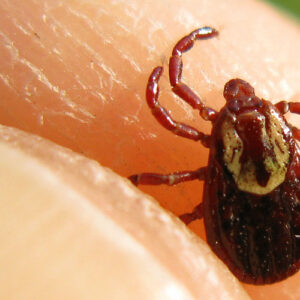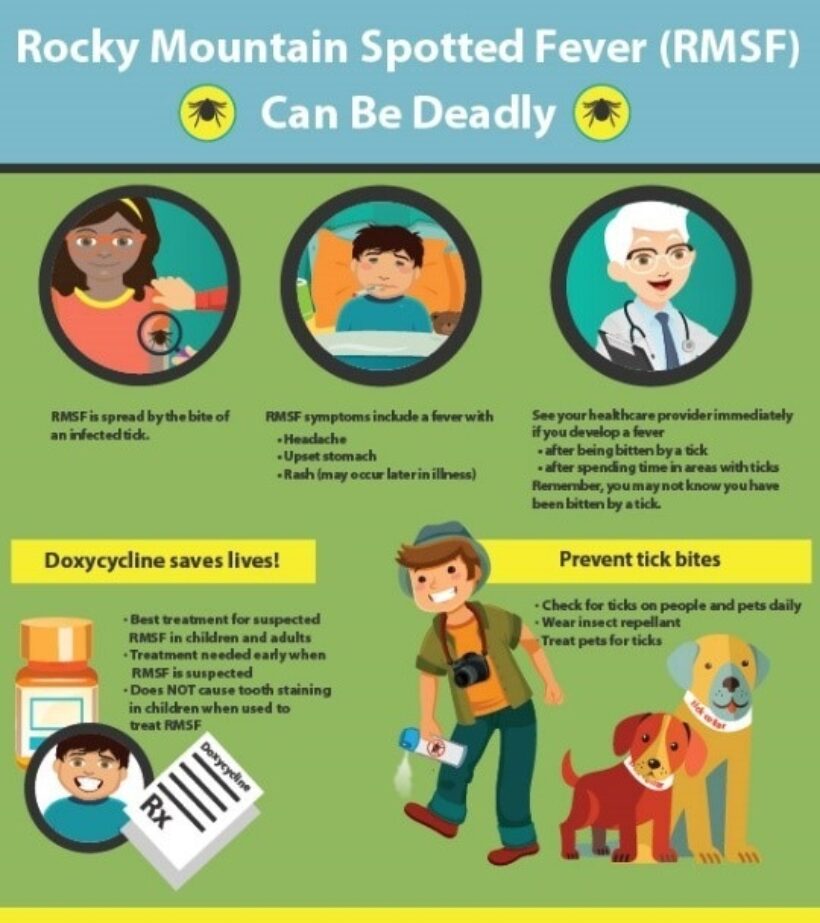
Locally Acquired Rocky Mountain Spotted Fever
For the first time in nearly 20 years, a Washington resident has been infected with confirmed locally acquired Rocky Mountain Spotted Fever (RMSF). A Spokane County male in his 50s was hospitalized but has recovered. While rare (zero to three cases in Washington per year), this case serves as a good reminder of the possibility of locally acquired tickborne diseases and the need to take appropriate precautions when in tick habitats.
The bacteria that causes RMSF, Rickettsia rickettsia, is transmitted by the bite of an infected American dog tick, Dermacentor variabilis, or Rocky Mountain wood tick, D. andersoni. These ticks are found throughout the state and prefer woodland areas, medium height grasses and shrubs between wetlands and woods, and sunny or open areas around woods. They are more likely in eastern Washington than the west-side. More than 60% of reported Spotted fever rickettsiosis come from North Carolina, Oklahoma, Arkansas, Tennessee, and Missouri.

Courtesy, CDC
A rapidly progressive disease, RMSF signs and symptoms begin 3-12 days after the bite of an infected tick. Illness generally begins with sudden onset of fever, headache, gastrointestinal symptoms, abdominal pain, myalgia, rash, and edema around the eyes and on the back of the hands. Day five or later of illness can involve altered mental status, coma, cerebral edema; respiratory compromise; necrosis, often involving amputation, and multi-organ system damage. Without early administration of doxycycline, RMSF can be fatal within days. Post-tick bite antibiotic prophylaxis is not recommended to prevent RMSF.
For more information:
CDC - Rocky Mountain Spotted Fever
SRHD - Ticks
